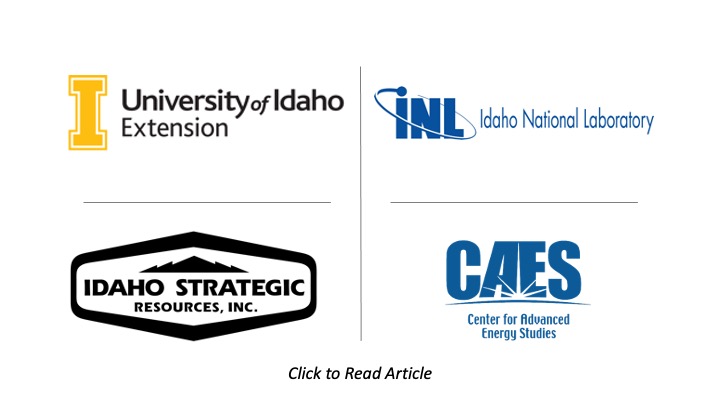Lemhi Pass Overview
The addition of our sizeable Lemhi Pass land package not only compliments our nationally ranked ‘Technology Metals’ Rare Earth Element (REE) holdings; by adding this well-known and equally important Thorium land package to our portfolio, the Company’s entrance into the ‘Energy Metals’ sector has been realized and a major U.S. Thorium/REE area is secured. Management at IDR operates with a multi-generational perspective – and the Idaho base of people, real estate, Gold production, technology metals (REEs) and energy metals (Thorium) is now complete.
The Company’s Lemhi Pass holdings covers approximately 11,425 acres and is comprised of a mixture of 568 unpatented lode mining claims and 1 State of Idaho mineral lease. The recently acquired Lemhi Pass land package is strategically located approximately 35 miles from the company’s Diamond Creek and Roberts Rare Earth Element holdings and 124 miles from Idaho National Laboratory’s (INL) Advanced Test Reactor (ATR). The Lemhi Pass area is well-known as the largest concentration of Thorium resources in the United States, per the USGS, and holds significant Rare Earth Element mineralization and potential for expansion.
Thorium Mineralization
The Lemhi Pass District was featured on the cover of the Thorium Deposits of the United States- Energy Resources for the Future published by the U.S. Department of the Interior and the USGS. According to Staatz (1972), Hedrick (2007), and Gosen (2009), the Lemhi Pass district is estimated to hold 133,400 tons of thorium oxide with an impressive vein system comprising 219 veins enriched in Thorium and Rare Earth Elements. The ratio of Thorium to REE concentrations in the veins averages around 1:1. Staatz (1972a) reported the REE analyses of 31 vein samples, which showed total REE-oxide contents ranging from 0.073 to 2.20 percent, providing the potential for REEs to be produced as a by-product should the area be put into production.

Thorium as a Fuel
The Company’s stance on Thorium as a future source of nuclear fuel is in-part driven by our nation’s shift toward decarbonization, and the well documented historic nuclear race between Thorium and Uranium during the onset of the Cold War. The latter won that race due, in part, to its plutonium by-product and our country’s desire for nuclear weapons at the time, however it was also discovered that Thorium is substantially safer and serves as the more climate friendly alternative to Uranium. With a paradigm shift underway and the current landscape having changed considerably, the U.S.’ focus is now shifted toward a low-carbon future. We feel the time is right for our country to re-discover Thorium as the preferred component of nuclear fuel and a source of high output/low risk energy to work in concert with wind, hydroelectric, and solar power.



